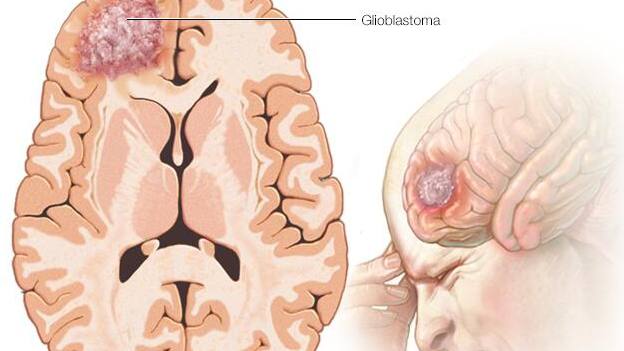A diagnosis of a brain tumor can be frightening. Of the more than 100 types of brain tumors, meningioma and glioblastoma are two of the most common.
Dr. Wendy Sherman, a Mayo Clinic neuro-oncologist explains the differences in these brain tumors and why research is crucial to help move towards a cure.
Journalists: Broadcast-quality video (1:01) is in the downloads at the end of this post. Please courtesy: "Mayo Clinic News Network." Read the script.
Meningioma
"The most common brain tumor is actually what's called a meningioma, which is a tumor that arises not in the brain itself, but it arises from the lining that surrounds the brain, the meninges," says Dr. Sherman.
Meningiomas are slow-growing tumors. Surgery may be suggested based on size and location.
"Most meningiomas are benign, and after surgery, they may never regrow. Or if they do, it may take a very long time," she says.
Glioblastoma
Another type of brain tumor is cancerous and fast-growing.
"Glioblastoma is the most common type of malignant tumor in the brain," says Dr. Sherman.
After diagnosis, treatment usually starts with surgery. "The first step is to remove as much of it as you can," says Dr. Sherman.

Treatments may slow the growth of cancer, but there is no cure for glioblastoma.
"That is the reason why we are so dedicated to our research efforts to find innovative treatments for this and, eventually, a cure so that we can change the landscape," says Dr. Sherman.
Glioblastoma treatment
Dr. Sherman says different forms of therapy are being researched, including immunotherapies, vaccine therapies, targeted therapies and medications.
Surgery is often the first course of treatment. The goal is to remove as much of the brain tumor as possible without damaging surrounding areas of the brain. Radiation therapy, like proton beam therapy or X-ray, usually comes after surgery. The radiation kills any glioma cells that might remain after surgery. Radiation is often combined with chemotherapy.
Related posts:
- Mother and daughter bond over brain surgery
- Against the odds
- Is a cancer clinical trial right for me?







